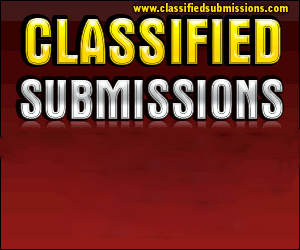Choose "Make this ad premium" at checkout.
Check with seller THE FUTURE OF PATENT LAW: TEXT GENERATION AND INTELLECTUAL PROPERTY Perth
- Location: Perth, Perth, Australia
Text generation technologies, a subset of artificial intelligence (AI), have advanced significantly in recent years, providing the ability to generate coherent and contextually relevant text. LLMs, LSTM networks, and RNNs are among the innovations driving this transformation. These technologies have enormous potential for a variety of applications, including automated content generation and chatbot responses. Text generation technologies are transforming the way AI Patent Attorney Australia are drafted, analysed, and managed. This article examines the impact of advanced text generation technologies on AI patents, emphasising their applications and advantages.
Innovations in Text Generation Technologies
Large Language Models (LLMs), such as OpenAI's GPT-4, have shown remarkable abilities in comprehending and producing human-like text. These models are trained on large datasets and can generate text that is both contextually relevant and coherent. They are especially useful in creating complex documents, such as patent applications, by understanding the context and intent underlying the text.Long Short-Term Memory (LSTM) networks and Recurrent Neural Networks (RNNs) are two other notable advances in text generation. LSTM networks are intended to remember long-term dependencies, making them ideal for producing structured and detailed text. RNNs excel at tasks requiring context and order, such as generating technical descriptions and claims in patent documents.
Automatic Patent Drafting
Automated patent drafting is one of the most important applications of text generation technologies in the field of artificial intelligence. Drafting a patent application is a meticulous process that necessitates a thorough understanding of both the invention and legal terminology. Text generation technologies can help patent professionals create initial drafts of patent applications, including detailed descriptions and claims. These technologies can analyse existing patents and technical literature to generate text that meets legal requirements and accurately describes the invention. This automation not only accelerates the drafting process, but also reduces the possibility of errors and omissions.
Enhanced Patent Analysis
Analysing massive amounts of patent data to find relevant prior art and technological trends is a daunting task. Text generation technologies can speed up this process by generating summaries and insights from large patent databases. For example, LLMs can be used to create concise summaries of lengthy patent documents, making it easier for patent professionals to review and comprehend key information. Furthermore, these technologies can detect patterns and trends in patent filings, providing useful information for strategic decision-making.
Improved Patent Search and Prior Art Identification
Conducting comprehensive patent searches and identifying prior art are critical steps in the patenting process. Text generation technologies improve the efficiency and accuracy of these searches by producing relevant search queries and analysing search results. LSTM networks and RNNs can be especially useful in this scenario because they can generate search queries that take into account the invention's context and nuances. This results in more accurate identification of relevant prior art, lowers the risk of patent rejection, and ensures that the invention is truly novel.
Streamlined communication and documentation
In addition to drafting and analysis, text generation technologies improve communication and documentation during the patenting process. Automated systems can generate responses to office actions, correspondence with patent examiners, and other required documents. Chatbots powered by LLMs can help inventors and patent professionals by providing instant responses to questions and guiding them through the patenting process. This automation increases efficiency while ensuring that all communications are clear and consistent.
Conclusion
Text generation technologies such as Large Language Models, Long Short-Term Memory networks, and Recurrent Neural Networks are transforming the AI patent landscape. These Lexgeneris cutting-edge technologies enable automated patent drafting, enhanced patent analysis, faster patent searches, and more efficient communication and documentation. Using these technologies, patent professionals can significantly improve the efficiency, accuracy, and strategic value of their work. As AI evolves, the integration of text generation technologies into patent management will become increasingly important, driving innovation and ensuring robust protection of intellectual property.






Useful information
- Avoid scams by acting locally or paying with PayPal
- Never pay with Western Union, Moneygram or other anonymous payment services
- Don't buy or sell outside of your country. Don't accept cashier cheques from outside your country
- This site is never involved in any transaction, and does not handle payments, shipping, guarantee transactions, provide escrow services, or offer "buyer protection" or "seller certification"
Related listings
-
 OPTIMIZING TRADEMARK STRATEGIES THROUGH TRADEMARK ANALYTICSLegal Services - Perth (Perth) - November 9, 2024 Free
OPTIMIZING TRADEMARK STRATEGIES THROUGH TRADEMARK ANALYTICSLegal Services - Perth (Perth) - November 9, 2024 FreeIntroduction Trademark analytics involves a systematic review of data related to trademark registrations, market trends, and competitor activity. This data-driven approach provides valuable insights for strategic decision-making, optimizing trademark...
-
 Understanding the Australia Trade Mark Registration ProcessLegal Services - Perth (Perth) - November 4, 2024 Free
Understanding the Australia Trade Mark Registration ProcessLegal Services - Perth (Perth) - November 4, 2024 FreeWhen starting a business or launching a new product, protecting your intellectual property is crucial. One of the key aspects of this protection is securing a trade mark. This article will guide you through the Australia Trade Mark Registration Proce...
-
 Is it Possible to Amend a Trademark Application after Filing in Australia?Legal Services - Perth (Perth) - October 30, 2024 Free
Is it Possible to Amend a Trademark Application after Filing in Australia?Legal Services - Perth (Perth) - October 30, 2024 FreeYes, it is possible to amend a trademark application after filing in Australia, but the scope of amendments is limited to ensure the integrity of the original application. Under Australian law, minor changes can be made to the application, but substa...



